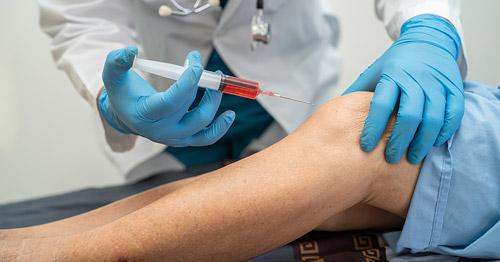Cartilage Injuries & Disorders
Articular cartilage lines the ends the bones that form our joint surfaces and is composed of cells called chondrocytes, with a matrix or scaffolding made of collagen and proteins. In healthy joints, this unique and durable material allows bones to move against one another with minimal friction. Damage to protective tissue can cause pain, stiffness and weakness.

Although traumas or acute injuries can stress or tear articular cartilage, such as when an athlete tears the meniscus in the knee, it is more commonly damaged by degeneration (wear and tear over time by osteoarthritis) or prolonged inflammation (through conditions such as rheumatoid arthritis).
Treatments to protect joint bones that have been affected by cartilage conditions range from nonsurgical, conservative measures such as activity modification, weight loss and/or various types of injections, to surgical procedures that range from arthroscopic resection to cartilage repair and regeneration, or joint replacement surgery.
Typically, when areas of cartilage are either worn or torn away, exposing the underlying bone, surgical treatment is designed to fill in the missing area or defect with healthy articular cartilage or prosthetic replacements to provide new protection for the joint surface.
Articles on treatments for cartilage conditions
- Knee Arthroscopy for ACL Reconstruction, Meniscal Repair, and Other Knee Problems
- Meniscus Surgery: Meniscectomy, Transplant, and Repair
- Knee Surgery: Cartilage Transplantation Autograft
- What Is Matrix-induced Autologous Chondrocyte Implantation (MACI)?
- Knee Surgery: Removal of Damaged Cartilage
- Knee surgery: Articular Cartilage Microfracture
- Knee Surgery: Damaged Patellar (Kneecap) Cartilage Removal
- Knee Surgery: High Tibial Osteotomy
Cartilage Injuries & Disorders Success Stories

